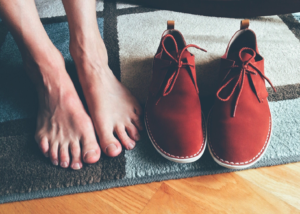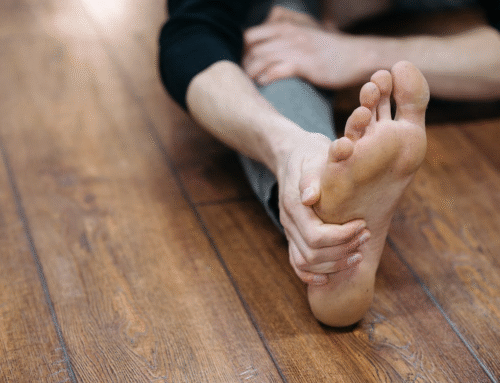Living in Artesia, close to the coast of Orange County, means enjoying the outdoors, beaches, and an active lifestyle. But the warm, humid climate and frequent exposure to wet environments—like public pools, gyms, and locker rooms—also increase the risk of toenail fungus. Surfers, runners, and sports enthusiasts often unknowingly expose their feet to the ideal conditions for fungal growth.
Toenail fungus isn’t just a cosmetic concern. Left untreated, it can cause nail thickening, discoloration, brittleness, pain, and even lead to infections that affect your overall foot health.
Why Toenail Fungus Develops
Toenail fungus, medically called onychomycosis, develops when fungi such as dermatophytes invade the nail bed. Factors that contribute include:
-
Moist, warm environments – Public showers, pools, and gyms
-
Footwear – Tight, non-breathable shoes that trap sweat
-
Health conditions – Diabetes, circulation problems, or weakened immune systems
-
Age – Older adults often have drier nails with tiny cracks, making fungal infections easier to take hold of
Even seemingly minor cracks in your nail can provide an entry point for fungi, allowing the infection to gradually worsen.

Signs to Watch For
Toenail fungus often progresses slowly. Early detection makes treatment easier. Common symptoms include:
-
Yellow or white spots on nails
-
Thickened or brittle nails
-
Nails are separating from the nail bed
-
Distorted nail shape
-
Foul odor
-
Pain or discomfort when walking
Prompt treatment is key to preventing more serious complications.
Potential Complications if Left Untreated
Ignoring toenail fungus can lead to more than just unsightly nails:
-
Bacterial Infections – Fungus can weaken the nail’s protective barrier, allowing bacteria to enter and cause cellulitis or other infections.
-
Foot Pain and Mobility Issues – Thickened or brittle nails may split, detach, or make walking painful.
-
Fungal Spread – Untreated fungus often spreads to other nails or even to the opposite foot, making treatment more complicated.
Addressing the infection early can protect your feet and prevent long-term issues.
Treatment Options: What Works and What Doesn’t
While several treatments exist, not all are equally effective:
-
Topical creams and medicated nail polish – Easy to access, but often fail to penetrate the nail fully. Cure rates are typically low (5–10%).
-
Oral antifungal medications – More effective (~60% cure rate) but carry risks like liver toxicity and require ongoing blood tests.
-
Nail removal – Removing the nail does not eliminate the fungus on the nail bed, so it’s generally not recommended.
Why Laser Treatment is the Best Choice
The PinPointe Laser is currently the most effective treatment for toenail fungus. Using focused heat, the laser eliminates fungus beneath the nail without damaging surrounding tissue.
Benefits include:
-
High success rate
-
Painless procedure
-
No recovery time
-
Usually, it only requires one session
Our nail doctors in Artesia recommend PinPointe Laser for its safety, speed, and long-lasting results.
How to Protect Your Feet
Preventing reinfection is just as important as treatment. Keep your feet healthy by:
-
Keeping them clean and dry
-
Wearing breathable shoes and moisture-wicking socks
-
Avoid walking barefoot in public spaces
-
Checking that nail salons follow strict hygiene practices
-
Treating athlete’s foot promptly
-
Regularly disinfecting nail tools at home
Fun things to do in Artesia, CA
Nestled in the heart of Southern California, Artesia, California, is a hidden gem that blends rich cultural heritage with convenient access to some of the region’s most famous attractions. Though small in size, this city offers visitors a unique mix of international flavor, community charm, and local landmarks that make it well worth exploring.
A taste of international culture
Artesia, California, may be a small city tucked between Los Angeles and Orange County, but it offers a unique cultural experience that makes it stand out. The city’s most notable attraction is Little India, located along Pioneer Boulevard, which has become the heart of Artesia’s international cultural district. Visitors will find an array of Indian restaurants offering everything from flavorful curries and biryanis to authentic South Indian dosas and North Indian tandoori dishes. In addition to dining, the district is filled with spice markets, sari and jewelry boutiques, and sweet shops selling traditional Indian treats. Strolling through this area provides a taste of the vibrant culture and heritage that has flourished here, making it one of the best spots in Southern California to experience Indian traditions without leaving the state.
Fun within the community
In addition to its cultural offerings, Artesia is also home to the Artesia Water Tower, a historic landmark that reflects the city’s early days as a farming community. While not a large attraction, it’s a meaningful symbol of the city’s identity and history. Beyond the tower, Artesia boasts several parks that offer a relaxing break from the busy urban environment. Local favorites such as Heritage Park provide open green spaces for picnics, strolls, and family gatherings. The city’s Parks and Recreation Department also organizes community events, youth sports, and cultural festivals throughout the year, adding a family-friendly charm to Artesia. Whether it’s enjoying a peaceful afternoon at a park or joining in on a seasonal celebration, the city fosters a strong sense of community that appeals to both locals and visitors.
Outdoor Activities
For those who enjoy outdoor activities, Artesia offers easy access to regional trails like the San Gabriel River Trail, which is popular among walkers, joggers, and cyclists. The trail stretches across miles of scenic paths, connecting multiple communities in the area and offering a chance to enjoy nature close to the city. This makes Artesia a convenient starting point for outdoor enthusiasts looking to explore more of Southern California’s landscapes. Additionally, the city’s central location places it within close driving distance of several larger attractions. Just minutes away, you can visit the Cerritos Center for the Performing Arts, which features concerts, theater productions, and cultural performances, or enjoy shopping at nearby malls and plazas in Cerritos. Artesia’s location allows you to balance small-city charm with access to big-city entertainment.
Just a short drive away
Finally, one of the biggest advantages of visiting Artesia is its proximity to some of Southern California’s most famous destinations. Just a short drive away are world-class attractions like Disneyland, Knott’s Berry Farm, and Universal Studios Hollywood, making Artesia an excellent home base for travelers who want to explore the region without staying in the middle of the hustle and bustle. For those who prefer coastal escapes, Long Beach offers a vibrant waterfront scene with harbor cruises, the Aquarium of the Pacific, and opportunities for whale watching. By blending local cultural gems like Little India with nearby entertainment, shopping, and outdoor experiences, Artesia provides the perfect balance of relaxation, exploration, and cultural enrichment for visitors seeking an authentic Southern California experience.
Get Professional Toenail Fungus Treatment in Artesia, CA
If you’re struggling with toenail fungus in Artesia, don’t wait until it worsens. At Laser Nail Therapy, our skilled doctors use the FDA-approved PinPointe Laser to safely and effectively treat toenail fungus.
📞 Call (800) 672-0625 or visit our website to schedule a consultation. Take action today and restore your nails to a healthy, clear state!




